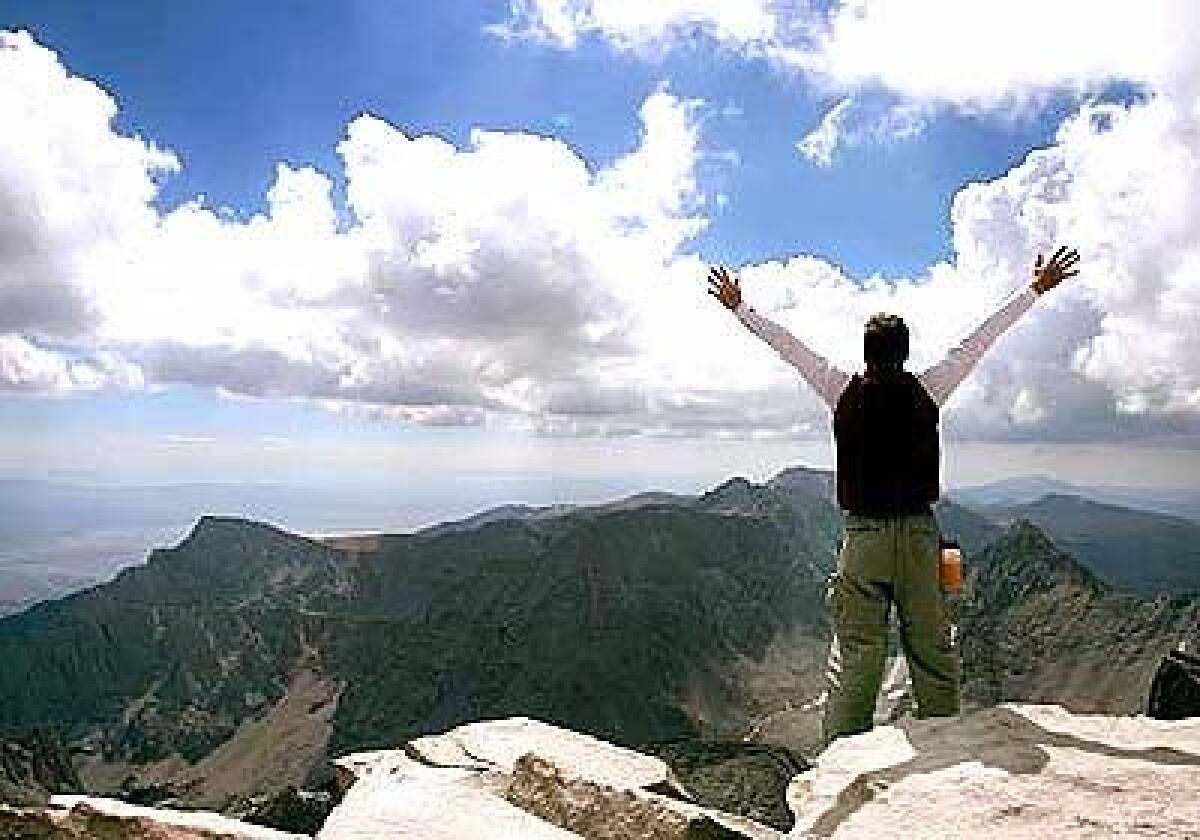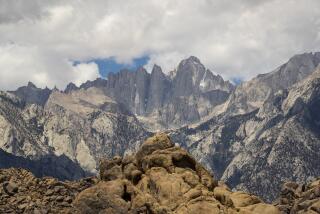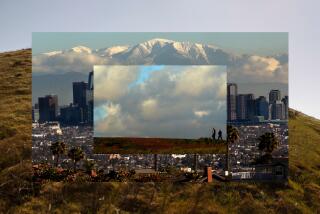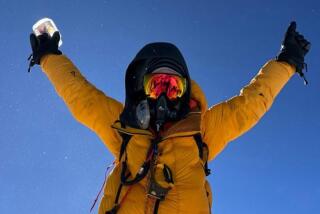Higher calling

Get on up, you can do that dizzying trek — and touch the sky.
Somewhere around switchback 57, of the 97 twisting from Trail Camp up to 13,777-foot Trail Crest, it dawns on you that there are many fine, flat places you’d rather be stumbling than this sliver of scree allegedly leading to Mt. Whitney. But this is no place for logic. It’s a realm where straining quads and gurgling guts are overruled by a higher mandate: Get to the top. The impulse to trudge 22 miles round-trip, with 6,182 feet of elevation gain, comes from the distinctly irrational side of the brain, the one usually squelched by the weight of duty, habit and extra-cheese pizza.
Climbing the tallest peak in the contiguous U.S., or any great summit, is about the wonderfully illogical acts of adventure and aspiration, about the need to transcend mortal, puny worlds to taste the power and mystery of the colossal and eternal.
Whitney’s massive eastern face and adjoining saw-toothed pinnacles are certainly all that, a magnet for irrational exuberants. In 2004, the Mt. Whitney Trail marks its 100th anniversary. Outdoors is celebrating a century of staggering with an entire issue on the West’s premier peak. Because now is when you should plan a landmark ascent for next year, the following pages will give you a jump on the whys and wheezes of a Whitney expedition, from how to avoid altitude sickness to critical gear and training tips you need to come out on top.
At 14,497 feet, Whitney is no K2 or Kanchenjunga, which are twice as high, but the payoff atop the summit is the same — the height of achievement, something humans have been drawn to from the minute we bumped into earthbound ceilings.
The highest peaks always have evoked our loftiest ideals, so much so that mountaineering originally was a province of the gods — Zeus and company taking up permanent residence on Mt. Olympus; the kachinas of the Hopi on the San Francisco Peaks; or Shiva and family on Tibet’s Mt. Kailas. As Everyman’s Everest, Whitney allows us nondeities a chance to overcome presumed limits and hidebound excuses and reach for something larger than ourselves.
Built in 1904, the trail originally was designed as a pack-train route. There were a growing number of scientific expeditions to the peak, which was seen as the ultimate site for astronomical and meteorological observations. The high-minded residents of Lone Pine, Calif., paid for it and subsidized trail upkeep and repair through the construction of its current route at the end of the 1920s — this, despite the fact that they were snubbed in their bid to name the mountain Fisherman’s Peak, in honor of local anglers who in 1873 were the first to climb it.
Johnny Lucas, Charley Begole and Al Johnson reached the summit on a lark when they were camping in the area, beating members of the California Geological Survey, who sighted it in 1864 and named it after their boss, Josiah Dwight Whitney. But Whitney, the California state geologist and eventual Harvard professor, was no authority on congeniality and had alienated many in the Owens Valley while on a survey of quake damage in 1872. Whitney had one very big advantage, though. He made the maps. So the man with the steely gaze became the source of a name synonymous with higher aspirations.
Over the last century, the Whitney Trail has called generations of Southern Californians to its vaulting slopes and spires, sending straggling engineers, teachers, designers, dentists and families up granite ledges and past mystified marmots, who wouldn’t go more than 2 feet out of their way, let alone 22 miles, to stand on a pile of rocks when there are so many nice ones nearby. (Many of these fur balls couldn’t make it anyway, bloated on one too many trekker handouts.)
But then that’s what separates trailblazing humans from spectating rodents. As Jimi Hendrix and psychologist Abraham Maslow said, we need to touch the sky. The mountain ascent mirrors Maslow’s famed hierarchy of needs, which demonstrated that each of us is compelled to move up a pyramid of needs to reach for our highest potential. What in the neighborhood is higher than Whitney? And once we get there, we suddenly discover ourselves absorbed in what Maslow — for reasons now quite clear — called a “peak experience,” which science tells us is as good as it gets on the life satisfaction front. Climber Willi Unsoeld, who led the first ascent of Everest’s western ridge, knew the feeling well and claimed that all was right with the world whenever he got above 10,000 feet.
You gain a lot more than elevation on the trail to Whitney, which is why it doesn’t matter how many other people have climbed it or how fast you get there. It’s not about gold stars or career improvement or the back pats of external validation. It’s between you and the mountain, 12 to 16 hours of boot leather in breathtaking backcountry, a test that lays down a marker on a life fully lived.
Can you do it? One of the lessons you learn along the way is that it’s just walking. For a really long time. And that, if you dare to keep going in the direction of doggedness, you get there — and more.
Stick your matted hair and salt-stained mug into the firmament at 14,497 feet and you know: The sky’s the limit.
More to Read
Sign up for The Wild
We’ll help you find the best places to hike, bike and run, as well as the perfect silent spots for meditation and yoga.
You may occasionally receive promotional content from the Los Angeles Times.






